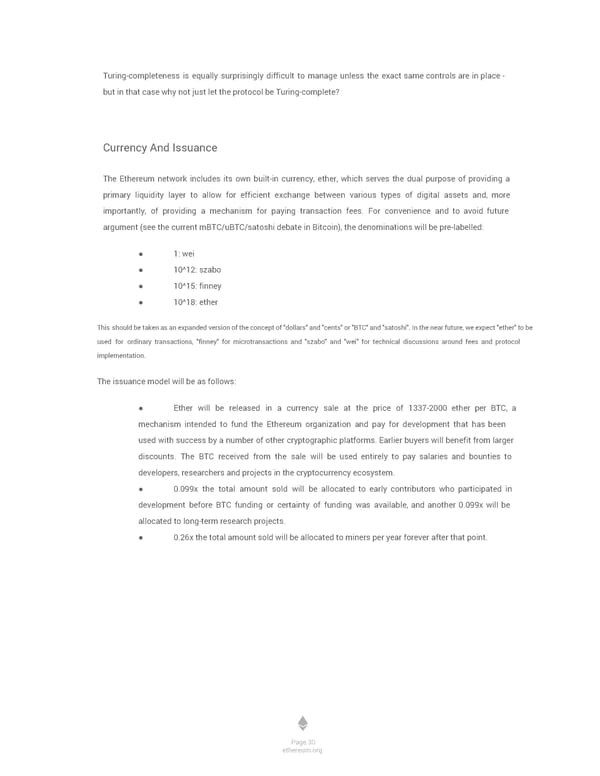Turing-completeness is equally surprisingly difficult to manage unless the exact same controls are in place - but in that case why not just let the protocol be Turing-complete? Currency And Issuance The Ethereum network includes its own built-in currency, ether, which serves the dual purpose of providing a primary liquidity layer to allow for efficient exchange between various types of digital assets and, more importantly, of providing a mechanism for paying transaction fees. For convenience and to avoid future argument (see the current mBTC/uBTC/satoshi debate in Bitcoin), the denominations will be pre-labelled: ● 1: wei ● 10^12: szabo ● 10^15: finney ● 10^18: ether This should be taken as an expanded version of the concept of "dollars" and "cents" or "BTC" and "satoshi". In the near future, we expect "ether" to be used for ordinary transactions, "finney" for microtransactions and "szabo" and "wei" for technical discussions around fees and protocol implementation. The issuance model will be as follows: ● Ether will be released in a currency sale at the price of 1337-2000 ether per BTC, a mechanism intended to fund the Ethereum organization and pay for development that has been used with success by a number of other cryptographic platforms. Earlier buyers will benefit from larger discounts. The BTC received from the sale will be used entirely to pay salaries and bounties to developers, researchers and projects in the cryptocurrency ecosystem. ● 0.099x the total amount sold will be allocated to early contributors who participated in development before BTC funding or certainty of funding was available, and another 0.099x will be allocated to long-term research projects. ● 0.26x the total amount sold will be allocated to miners per year forever after that point. Page 30 ethereum.org
 Ethereum White Paper by Vitalik Buterin Page 33 Page 35
Ethereum White Paper by Vitalik Buterin Page 33 Page 35